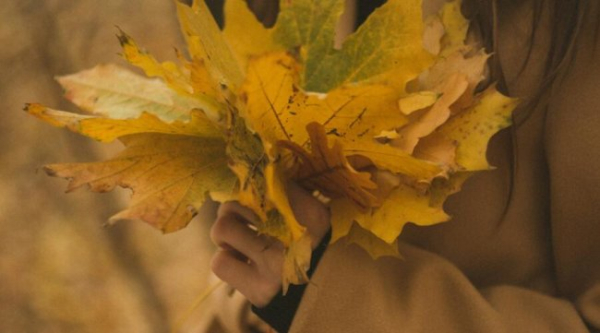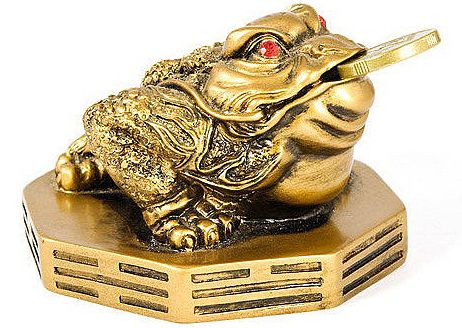
The name Avsen sounds like a perfect fit: everything seems immediately clear—autumn, the fading sun, the harvest, grandfather's songs. You want to give him the “seasonal minister's portfolio” and say: here he is, the master of the time of leaf fall and the summing up of things. But the more closely you listen to the folklore, comparing local customs and later retellings, the more you realize: before us is not a stern figure, but a layered cultural layer.
Let's figure it out, without myth-making fervor or academic dryness: where the old evidence ends and conjecture begins, why “Avsen” is easily confused with “autumn” and “oats”, what functions the later tradition ascribes to the image, and what useful things remain for us if we remove the gilding.
In one region, Avsen is the refrain of a song, in another, the name of the spirit of good fortune, somewhere, a poetic recording of the first cold, and in modern reconstructions, he is transformed into the “god of autumn,” who watches over the harvest and the rhythms of the year.
Where did Avsen come from and why does he have so many names?
Eastern Slavic song lyrics include refrains such as “Ovsen!”, “Avsen!”, “Usen!”, and “Tausen!” Some researchers have linked this exclamation to the word “oves,” others to the word “autumn,” and others have heard traces of an ancient name. In other words, there's a fork in the road already at the sound level.
In oral culture, such “calls” live for centuries, expanding in meaning, and thus easily become characters: there's a name, there's an outline—finishing the figure is a matter of technique. This is how many “word gods” are born: first a refrain, then a plot.
Multiple names are normal for a living tradition: the same phenomenon was called differently in neighboring villages. Hence the long chain of variations: Avsen/Ovsen/Usen/Tausen. Sometimes it was “crossed” with more well-known images: Svetovit, Svyatovit, and solar deities—this made its function clearer.
God of Autumn or the Voice of the New Year
The most important clarification: in some traditions, “Ovsen” was sung not in autumn, but in the Christmas and New Year cycles. It was chanted during the time of going from house to house, sowing, and wishing for a harvest and prosperity at the beginning of the year, which in the old days fell in winter. Here, “Ovsen!” is a signal for renewal: “may there be plenty of bread,” “may the year be easy.”
Where does the “god of autumn” come from?
- Firstly, the similarity in sound with “autumn” is very tempting.
- Secondly, in late poetic and neopagan literature, it's convenient to “divide” the year among characters: spring – Yarilo, summer – Kupala, autumn – Avsen, winter – Morana. This scheme is beautiful and memorable, and therefore enduring.
But the historical evidence here is weaker than the artistic logic.
How do later sources describe him? In popular retellings, Avsenya is often depicted as a solar rider: he gallops forward along the road of the year, “clearing the way” with light, overseeing fertility, and protecting the home from want. He is credited with gentle justice and a quick temper, a love of home and marriage, and patronage of those born between the equinox and solstice. His main attribute is a sheaf of ripe wheat, a visible sign of gratitude for the harvest.
An image that well encapsulates the autumnal meaning of village life:
- collect;
- save;
- share;
- enter winter without debt.
What's important is that such descriptions summarize the season's functions rather than cite a single ancient cult. They are useful as symbols, but they cannot be passed off as “ancient norms” without reservation.
Why Avsen's image still works
Even if we treat the “god of autumn” as a late construct, he hits the nerve of time.
Autumn for the Slavs is a time of savings and agreements:
- the last sheaf is carried into the house;
- renew the fire;
- count the bags;
- repair tools;
- They start getting married and organizing evening get-togethers.
If a cult of a single name existed, it wouldn't be about wine and fireworks, but about moderation and order. Avsen, in this interpretation, is a figure who reminds us: the sun is currently on a low trajectory, the day is short-lived, and the household has many small chores. And in this sense, we need the “god of autumn”—as the personification of discipline.
It is useful to see the line where ethnography ends and fantasy begins.
Ethnographically reliable zones include:
- songs with choruses “Ovsen/Avsen” (for different times of the year – depending on the locality);
- rites of the last sheaf and the “first fire” of the house;
- cycles of wishes for prosperity, rounds, sowing;
- general “solar” symbolism (wheel, circle of the year, sheaf, bread).
But the unified cult of the “god Avsen, master of autumn,” with its temples, priests, and strict dates, is a late reconstruction. It's not useless—it helps us think about the year as a system—but it remains a hypothesis, not a discovered “chronicle.”
How the myth is formed today
Modern consciousness easily adds layers: online encyclopedias, neopagan websites, fiction novels. Song fragments, scientific conjectures, and beautiful dogmas coalesce. And now Avsenya has character traits, favorite gifts, and precise dates of patronage.
It's like a crystal growing around a grain: the core is the actual sound of “Ovsen!”, and everything else grows around it. So, it's useful to shake the crystal from time to time: what's based on fact, what on aesthetics.
If we take the image of Avsenya as a working metaphor, then in our practice it gives birth to a short, sober “autumn charter”:
- A sheaf is a symbol of composure: don’t drag everything into the house, drag what is properly tied.
- Organize affairs, documents, projects.
- Low sun – the rhythm of measuredness: plan according to the light, do not promise too much, leave a gap.
- The threshold of winter is the ethic of sharing: redistributing surpluses, helping those who are in more difficult situations.
- A home fire is a regimen of small rituals: ventilation, repairs, cleaning, maintenance—all without a plot, but it saves the winter.
Thus, the “god of autumn” ceases to be a postcard and becomes a reminder of sustainability.
Personifying the seasons isn't dangerous in itself—as long as you remember that it's a language, not a “protocol of the gods.” What's dangerous is losing your critical ear, conflating refrains, conjectures, and desires into a single “ancient truth.”
The most mature gesture is to combine respect for tradition with precision. And the good news is that Avsen only benefits: he becomes not a paper “leader of autumn,” but the generalized wisdom of the homely season.
We apparently don't find a strict “single” god of autumn among the Slavs. We find the call “Ovsen!”, many local song practices, rituals of the last sheaf and the home fire, solar symbols, and a late but expressive attempt to gather all of this into a single image. Avsen in this form is a useful compilation: it reminds us that autumn is not a museum of decay, but a workshop for bringing life into order.
And if we accept this image honestly, with the caveat that “it happened later because it's convenient for us,” it works beautifully. Avsen doesn't demand bows and sacrifices. It demands sheaves and moderation: tying, counting, distributing, giving thanks. Then the myth won't deceive: when you put bread and salt on the table, when the house glows with a warm light, when the soul is at peace—the “god of autumn” truly comes.





